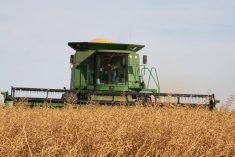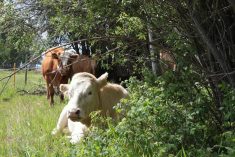Items selected from the University of Alberta’s Bruce Peel Special Collections Library show the history of cookbooks in Western Canada
Compiling a food history is complicated — it has to include culture, economics, politics, gender roles — and of course, recipes for chiffon pie. “Culinaria — A Taste of Food History on the Prairies,” a new digital exhibit by the University of Alberta, has it all.
Co-curator Caroline Lieffers says she’s certain others will be as delighted as she has been by what they discover.
The documents come from U of A’s library’s extensive collection of western Canadian-focused, food-related publications. Lieffers began looking at them while studying for her master’s degree in history.
Read Also

Lethbridge Polytechnic researcher helps unlock the economics of farming
Lethbridge Polytechnic researcher Selin Karatepe is helping agriculture producers with decision-making tools in economic feasibility.
“I was studying the history of cooking and housekeeping, and I found stories that were just fascinating, and so rich and wonderful, and I wanted to bring them to a larger audience and make them more public and accessible,” said Lieffers, who is now a research and collections assistant at the university.
The digital exhibit created with co-curator Kristine Kowalchuk includes titles like The Saskatchewan Homemakers’ Kitchens c. 1955 and the United Farm Women of Manitoba Cook Book 1929 plus about 80 other items chosen for how they reflect food history in Western Canada.
These are documents that make the history of food really interesting to learn — and personal, says Lieffers.
“It’s the history of everyday life,” she said.
The website is organized into four categories. A “business and branding,” section of the site features titles such as the 1918 Robin Hood Flour Cook Book: Recipes by Mrs. Rorer, and the 1915 Five Roses Cook Book from the Lake of the Woods Milling Company.
These are cookbooks part of a huge genre of marketing material that influenced people to use companies’ products, says Lieffers. “They’re fascinating because they show you how these manufactured goods found their way into people’s homes, and how people were taught to use them.”
Also found in this section are titles such as Saskatchewan farm woman Mrs. Mary Berkner’s Country Cook Book: With Special Recipes for Making Cookies and an Improved Method of Making Sugar-Beet Syrup, and a 1928 Canadian National Railways; Dining Car Menu for Little Folks with a charming poem about “where all things good in the way of food are served by the CNR.”
Cookbooks that reveal the multi-ethnic settlement of the Prairies include titles such as a 1945 Ukrainian-English Cook Book, written in Ukrainian and including recipes for mushroom “catsup” and a home remedy for lockjaw, and Das neue Nordwesten Kochbuch with wild meat recipes and a German-English glossary to help housewives of the day place orders with the grocer.
Home economics textbooks that instructed generations of Prairie-raised kids about nutrition and proper table manners are included in a section on “health and education.” Here is where Rural School Lunches describes a 1918 Alberta Department of Education program for introducing hot lunches in rural schools because “most children brought a cold lunch to school and ate it haphazardly throughout the day.”
A category devoted to “war, politics, and social engagement” shows how Prairie women have been involved in community building over the decades, says Lieffers. “That was one of my favourite ones to put together,” she said. “It brings out these examples of how women used cookbooks as a way to be active in their communities, even before they had a chance to vote.”
This is where you can find The Alberta Home Maker produced by the Social Credit Women’s Auxiliaries of Alberta around 1947. It contains recipes for Debt Free Fruit Cake and Scripture Cake — deciphered by first looking up the appropriate Bible verse. You can also see the contents of the 1929 United Farm Women of Manitoba Cook Book with its Manitoba Telephone System ad declaring the telephone as “the unfailing friend on the farm.”
Other gems on the site include a 1923 report from the Alberta Dairyman’s Association, Oleomargarine and its Relation to Canadian Economics calling for the renewal of the margarine ban temporarily lifted in 1917 during the First World War butter shortages. There’s Starting a Farm in the Bow River Valley, Southern Alberta, Canada, published around 1909, by the Canadian Pacific Railway Company Colonization Department to promote its three-million-acre irrigation block, a project begun east of Calgary to lure farmers west during the dry spell of the 1890s. Cooking the Co-op Way pays homage to the extensive Prairie retail co-operatives which eventually formed Federated Co-operatives Limited.
Lieffers, an Edmonton resident with family across the Prairies, says those who view the site are sure to feel the same personal connection to the materials that she did.
“That’s what I love about this exhibit. It can really resonate with people. It’s a way of making history a really intimate and personal experience.”
Lieffers urges trying a recipe or two to get your own taste of Prairie food history.
“The story of food doesn’t just live in cookbooks. It’s in our kitchens and out in communities and our families and our memories. Everyone is part of this story.”















